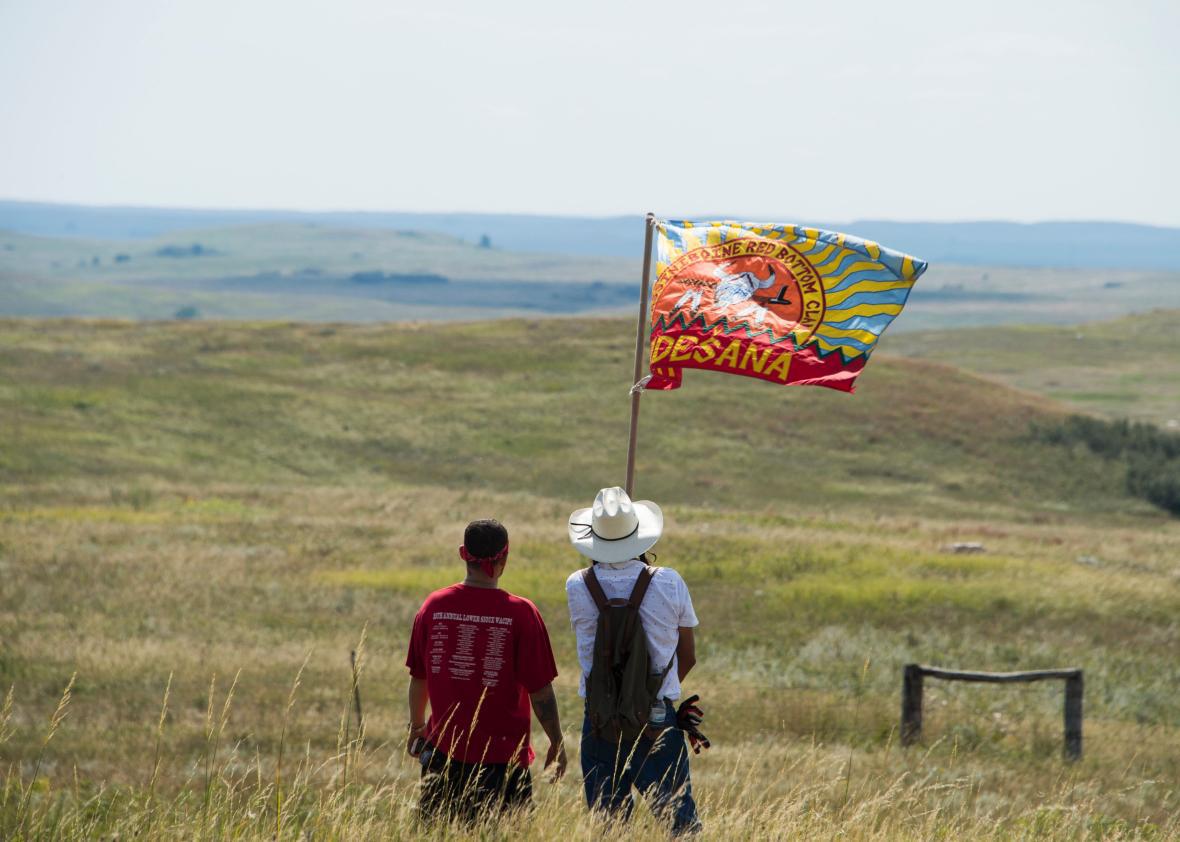On Nov. 14, in response to months of protests, the U.S. Army announced it needed more time to assess the potential conditions of the easement that would allow the Dakota Access Pipeline to cross beneath the Missouri River in North Dakota, just north of the Standing Rock Indian Reservation.
For Energy Transfer Partners, the company building the pipeline, the decision prolongs what is essentially a stop work order that the Obama administration issued in September. “The Army has determined that additional discussion and analysis are warranted in light of the history of the Great Sioux Nation’s dispossessions of lands, the importance of Lake Oahe to the Tribe, our government-to-government relationship, and the statute governing easements through government property,” the U.S. Army Corps of Engineers said in a November press release. The final piece of the otherwise nearly completed project, a tunnel beneath Lake Oahe, one of America’s largest reservoirs, can’t go forward without the Army’s approval.
It appeared to be a victory for the Standing Rock Sioux, who have been camped on federal land north of the reservation for months in protest of the construction. (Many Sioux dispute that the federal government actually owns the land, since it was assigned to the Sioux by an 1851 treaty that was later broken.) Protesters have been teargassed and fired on with rubber bullets and water cannons, prompting the Obama administration to ask ETP voluntarily halt construction pending de-escalation at Standing Rock; the company did not agree to that request. But the Army’s announcement to re-assess seemed promising news for the protesters.
On Friday, the other shoe dropped: The Army Corps announced that Oceti Sakowin Camp, the protest site closest to the pipeline tunnel, must be disbanded on Monday, Dec. 5. In a separate decision this Monday, North Dakota Gov. Jack Dalrymple ordered an emergency evacuation of the site and said he would refuse emergency assistance and other services to those who remained at the camp. Dalrymple has previously asked the feds to approve the current pipeline route.
It’s not clear if the Corps’ decision to reassess the final piece of the pipeline will be enough to convince the protesters to give up their ground. Some have said they will not abandon the land in favor of a “free speech zone” south of the Cannonball River. Tribal leaders have asked Army leadership to reconsider.
Standing Rock protesters are right to be wary: In essence, the Army Corps is asking the tribe to trust that they will engage in a good-faith discussion of alternate routes before allowing construction to proceed. And that may be true right now, in the waning months of the Obama administration. But the election of Donald Trump has given Energy Transfer Partners the confidence that time is on their side. “Do I think it’s going to get easier? Of course,” ETP CEO Kelcy Warren, a Trump donor, told the Associated Press last week.
Trump is predisposed to favor the pipeline, given his opinions on energy, the environment, and infrastructure—he sees environmental regulations largely as a nuisance that impede on the country’s economic progress. But he’s also likely to favor it because it will benefit his own pocketbook: He has maintained, as of his May financial disclosure forms, $15,000–$50,000 of stock in ETP, and between $100,000 and $250,000 of stock in Phillips 66, which will own one-quarter of the pipeline once it is completed.
As commander in chief, he could direct the Army to end its review and give Energy Transfer Partners the easement for the tunnel. And he’d almost certainly make a few thousand dollars for doing it, when stock prices responded. That’s not that much money, as Trump is sure to point out if this comes to pass. But it could be one of the first ways that Trump could explicitly profit from his actions as president.
What started as a protest over clean water may soon become a symbol for dirty governance.
